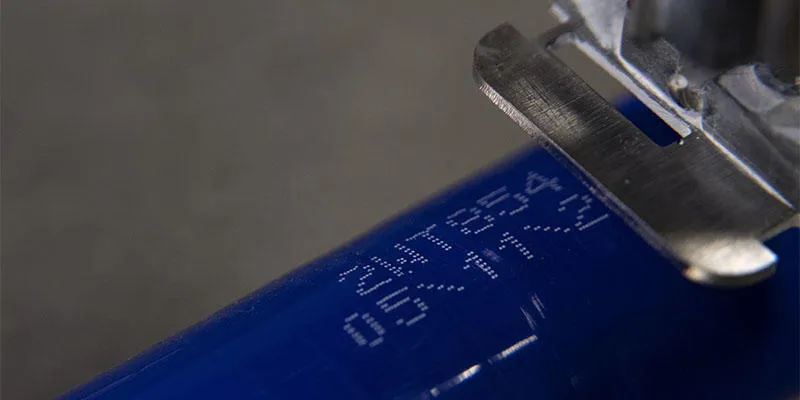Changing regulatory requirements, and individual commitments to environmental sustainability, are causing many businesses to rethink the recyclability of the materials used in their packaging. To provide customers with additional support in selecting and testing ink coding solutions for these new packaging approaches, Domino Printing Sciences (Domino) has expanded both its Ink Samples Testing Facilities and dedicated Pre-Sales team.
As part of these new developments, significant investment has been made in new technology for Domino’s samples labs, as well as increasing staff capabilities, to offer customers a dedicated pre-sales support member for each customer. The move comes as part of the company’s continued commitment to best-in-class customer service, providing quality assurance in coding and marking solutions.
“Product packaging requirements are constantly evolving, and any change in packaging materials can have a significant impact on the reliability, durability, and legibility of codes. Our technical specialists work closely with customers and the Ink Development team to find the best solution. In recent years, we have noticed a significant increase in the number of recyclable cardboard samples that have been requested. In response to this, the Ink Development team developed a mineral oil-free ink, specifically for these kinds of substrates. The recyclability factor has an impact on the types of inks we use and the advice that we give to our customers.”
Dr Susan Palmer - Head of Global Pre-Sales at Domino

Behind the scenes, samples are subjected to rigorous testing to ensure that they meet customer requirements. Tests for thermal Inkjet, continuous inkjet, piezo inkjet, and thermal transfer overprinting solutions are all handled by the Pre-Sales team, with individual labs dedicated to testing samples for each technology.
Once a sample is received, a list of potential solutions is chosen in discussion with the customer, considering factors such as speed, material type, and customer-specific factory conditions, before being passed to the relevant lab for further testing. The technicians then conduct a variety of sample tests to ensure a clean, crisp code.
“It’s all about asking the right questions and understanding the limits and capabilities of the chosen substrate,” says Palmer. “Polyethylene and polypropylene are currently very popular in a range of industries because they are easy to process and recycle. However, these materials can prove challenging when printing with ink because they have a low surface energy.”
For ink to adhere properly during printing, it must first spread out and make complete contact with the substrate. Surface tension dictates this flow – the surface energy of the ink must be lower than that of the substrate for it to stick. If a substrate has low surface energy, the ink struggles to adhere, which can lead to poor print quality.
In the Domino sample labs, a variety of initial tests are carried out, including gauging the surface tension of a substrate. From these tests, technicians can determine which solution is the most suitable to get the code quality that the customer requires.
“We have inks and ribbons which have been specifically designed to stick to low surface energy substrates, so it’s just about finding the best solution for the customer requirements,” continues Palmer. “This can vary depending on the packaging contents and the type of production line. For example, on a beverage line, where moisture can build up on the outside of cans and bottles, you need to ensure you have an ink-based solution that can print through condensation.”

The global network of Ink Samples Testing Facilities is just one of the materials testing resources used by Domino to ensure that customers are always given the best coding solution. The Pre-Sales team has the technical knowledge and expertise to advise customers on the best coding solutions, even if this necessitates a move away from ink.
“If we think a different technology would better serve a customer, we will always advise this,” notes Palmer. “We work closely with Domino’s Laser Academy to ensure that customers are offered the best possible solution for their specific requirements.”
Alongside customer testing, Domino’s sampling labs are also continually experimenting with new substrates to build up in-house knowledge to advise on coding solutions for new substrates. A comprehensive and informative catalogue of pre-tested materials is continually being updated.
Domino’s investment in improving its Inks Sample Testing Facilities, and the expanded Pre-Sales team, are examples of the company’s universal approach to quality assurance. Domino’s global sample testing facilities exist to ensure that customers are able to find and trust the most appropriate and reliable coding solution for their requirement.
To discover how Domino’s laser academy in Germany is scientifically testing new substrate types visit https://bit.ly/381up9Z